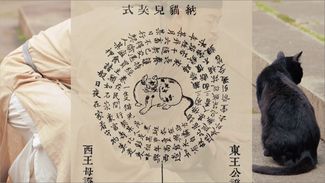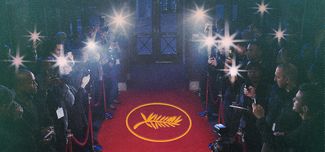Industry insiders discuss challenges, from regulation to localization, and reflect on the evolution of the Chinese audience in the past decade, and shed light on where future opportunities might emerge
This year, China’s concert scene saw a long-awaited post-pandemic revival, partially driven by an increased number of international singers hosting live events. From Mariah Carey and Jessie J to Ed Sheeran, many of their concerts sold out within minutes of tickets going on sale. In September, Ye (formerly known as Kanye West) attracted over 80,000 attendees with two listening parties in Haikou in China’s island province of Hainan. The first event alone reportedly generated a box office of 51 million yuan (7 million US dollars).
Outside the music scene, there is a steadily growing demand for imported content, including books, films, art, and other cultural projects, in the Chinese market. However, the industry faces challenges from regulatory constraints, localization, and the evolving tastes of the Chinese audience. We invited two industry insiders to shed light on these issues in this episode.
Guests:
Marion Bertagna is the founder and director of MB Projects, a cultural agency that offers strategic consultancy and operational services for French and Chinese cultural institutions and companies.
Yoyo Sun is a concert organizer who brings international musicians to China for performances.
Subscribe to the Middle Earth Podcast: Apple Podcasts | Spotify | Google Podcasts | Amazon Music | Overcast | RSS Feed
The following are excerpts from the transcript of the episode (edited for clarity):
04:34
Aladin: With such a large potential market, is introducing cultural projects to China an established, lucrative business, or is it still niche?
Marion Bertagna: I’ve been organizing various cultural projects in China for the past 15 years, and I’ve seen the public evolve significantly. There’s been a noticeable increase in interest in cultural content, both local and foreign. However, China is so huge, it’s hard to generalize about the Chinese audience. It really depends on which city you are in. Foreign content is more commonly showcased in major cities, especially first-tier cities like Beijing, Shanghai, and Guangzhou, as well as in some larger second-tier cities. It also depends on what kind of projects you bring. Big, well-known names tend to do very well and easily sell tickets. But for lesser-known names or projects, it will be harder to find the right audience.
Yoyo: I started my business about 10 years ago when I visited a jazz bar in Japan and got the idea of bringing more Japanese jazz musicians to Shanghai to make the nightlife there more vibrant. Not just Shanghai, but also Beijing, Guangzhou, and other major cities. Most of the concerts we organize now are still for the tier-one market since the average ticket price is more fitting there. We also seek sponsors for these concerts, and most companies who would sponsor these events are located in tier-one cities.
11:20
Aladin: After you find a potential exhibition or a musician you want to bring to China, what is the difficult part in making it happen?
Marion: Our company works both ways. We do strategic consulting for both Chinese and foreign clients. We can work for Chinese museums that are looking for content, where they would come to us and ask, do you have an exhibition? Because a lot of museums have been built over recent years, but they don’t have collections. The difficult part might be that they don’t really know what they want and what could work. What we offer them is strategic consulting: What do you want to do, who’s your public, what’s your positioning, what’s your business model, etc…and then help them find projects to build their positioning and fit into their plan.
Aladin: From our prior conversation, Yoyo, you are more than an agent but also a producer and investor. You find the artists, bring them to China, do marketing, and sell tickets. Does it feel like a gamble sometimes?
Yoyo: If I do everything by myself, it’s like a gamble. But I also work with local government purchasing projects. This could be very different. Like Marion just said, sometimes the local government will say I want a type of jazz musician, but they don’t know which one. I may have a suitable candidate and we discuss the expense and other terms. In China, we have to submit the concert plan and related material for review beforehand, including lyrics, presentation, whether there’s an accompanying dance, and what the performers will wear on the stage. These are a very small part of the trivial things that every local government needs to check. They will issue the paperwork if the project passes review, and then you can apply for visas.
Marion: There’s one thing that’s a bit difficult but is also the interesting part of bringing an exhibition to China. It is to understand the public, who will be coming to see your exhibition, and what should you show in China. The real important part of it is the localization of the exhibition, how to adapt to the local public. You cannot just simply translate what you’ve done in Europe. Sometimes it needs more explanations, even if it’s a grandmaster’s exhibition.
Aladin: You have been in the industry for some years now, could you share with us the growth of knowledge you have seen in the public?
Marion: Yes, totally. I used to be the cultural attaché of the French Consulate between 2010 and 2014. I remember at the very beginning when we brought, for example, a contemporary dance show. It was very hard to fill a theater because there was a very small audience for contemporary dance. When I left the consulate five years later, there was already much more interest. The public is very committed. When they see something they like, they will go do research, and they have access to so much more information online. The museum-going public here is much younger, which is very different from France. French museums are struggling to renew their audience and trying to draw more young people to museums, whereas in China, it’s more young people who want to learn. A lot of families also want their kids to learn more about art.
21:00
Aladin: For us, Marion, it is a special year because it’s the 60th anniversary of the friendship of France and China. The Palace of Versailles has sent over some artifacts to exhibit in the Palace Museum, and you’ve represented the Palace of Versailles on social media like Weibo. In terms of government-to-government cultural exchange, every embassy in China works to bring their art and culture. Do you see a real impact of those events on the Chinese public?
Marion: This year is the 60th anniversary of the establishment of the diplomatic relations between France and China. There was a big focus on this diplomatic event and culture was definitely a big part of it. I think the embassy counted more than 400 events around China for the whole year. But it’s not only diplomatic. There is a long history of cultural collaboration and cooperation between France and China. There are many actors involved, such as institutions, schools, and people who work between France and China in the cultural sector. There’s a whole network of those collaborations and not just those events for this year. I think what the embassy is trying to do is to shed light on this. They support and promote these events but it’s all operated by various actors and institutions and people, both public and private. The 400 events are all not the same event and don’t have the same impact. It also depends on if they are tailor-made. The way it functions is that they really try to find the best partners to organize the projects.
25:43
Aladin: Yoyo, can you explain your marketing process? Especially when you bring musicians who may not have huge followers in China.
Yoyo: Big label and big-name artists have a fixed audience who will want to see them performing on stage because they’ve never come to the Chinese market before. Like Yamamoto Tsuyoshi from Three Blind Mice (record label) or Takashi Mizuhashi. We will have more big names coming to the Chinese market next year. On the marketing side, there are already existing WeChat groups of jazz fans, our target audience, which makes promoting much easier. Let the news spread that a particular musician will come. Then I work with QQ [music], like a Chinese Spotify, to showcase more of their music, start more conversations about their music, and influence the young generation to expand the audience. But if I chose relatively lesser-known artists or types of music, it could be more work. For example, I like Japanese flamenco. Although flamenco is popular in Beijing and Shanghai, people don’t know about Japanese flamenco, so I need to spend a lot of time to find resources, prepare materials, and do a lot of promotion. I need to convince people who like flamenco and change their mind to accept Japanese flamenco.
28:44
Aladin: Right now, the economy is contracting. How do you see the future?
Marion: Yes, the tickets for museums are quite expensive, so I think people are more careful about how many exhibitions they see, or they will inquire a lot about the exhibition before deciding to buy the tickets. It’s more difficult. But the general trend is still that this market is growing. Of course, it’s easier for public museums that have public funding and can offer cheaper tickets. The private museums are struggling a bit more, especially those backed by real estate companies. But I think globally the trend is that there is a bigger audience for museums, and museums are trying to find more ways to attract the public. I think there’s still lots of opportunities. Some cities still have a big margin for growth.
Yoyo: I totally agree that there are a lot of opportunities. You just have to be really selective about your target audience and know what kind of content they like. There is still a niche market you can tap into if you pick the artists well and do a lot of work and analysis beforehand.
Marion: Yes, I agree with you. It’s really a question about being more selective. Maybe in the past, you could do anything just to try. But now you need to be more careful and think about what to bring. You need to think more about what are you bringing, who are you targeting, where do you do it, and what’s the price of your ticket, etc., etc. But if you do that, then I think you will have good opportunities.









